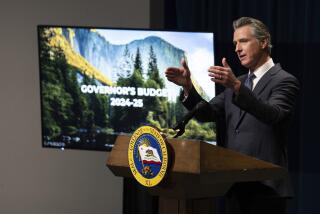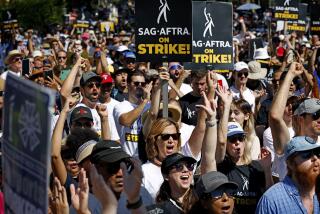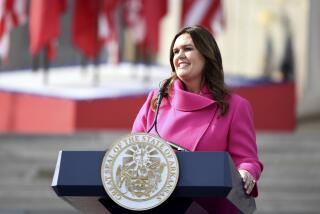LABOR : Unemployed Workers May Not Get Benefits : Carter, Reagan cuts left fewer people eligible, shortened length of aid. Funds running low and help is unlikely.
WASHINGTON — Hundreds of thousands of American workers laid off during the current recession are getting another nasty surprise after being handed their pink slips: They are not entitled to receive unemployment insurance benefits.
In the midst of the worst economic downturn in nearly a decade, a smaller percentage of America’s jobless workers is qualifying for federal and state unemployment benefits than at any time in the last 20 years.
What’s worse, those who do receive benefits discover they are available for only limited periods and are worth less than ever before: The payments are taxed at both the state and federal levels, and the insurance funds in many states other than California may soon be exhausted.
Federal and state jobless benefits have been cut so sharply in the face of mounting fiscal problems that the unemployment insurance program is now only a shadow of its previous size.
Indeed, the Labor Department reports that less than half of the more than 8 million unemployed workers nationwide are eligible for any kind of jobless benefits at all--far less than during the 1974-75 recession.
TORN ‘SAFETY NET’: The shortfall is important because the unemployment insurance program traditionally has served as a kind of “safety net” that helped cushion the impact of a recession. It has been one of the key “automatic stabilizers” that prevent the economy from tipping too far.
Democrats have been calling for increased financing to expand the insurance coverage during the current recession, but the effort has run into the constraints of the new budget agreement, which requires lawmakers to find offsetting spending cuts or tax hikes first.
Both of those options are considered political losers in Washington today.
Rep. Thomas J. Downey (D-N.Y.) has introduced legislation that would provide $2 billion a year to extend coverage in states with high jobless rates, at the same time increasing federal payroll taxes paid by employers to help pay for it. Currently, however, the measure has little chance.
The decline in federal unemployment insurance benefits began late in the Jimmy Carter Administration but accelerated after Ronald Reagan took office and the economy fell into the recession of 1981-82.
In an effort to trim the cost to the federal government, the Reagan Administration killed a Democratic-sponsored plan that would have extended jobless benefits further. And it sharply cut back federal funding for extended unemployment insurance.
Basic unemployment insurance provides coverage for 26 weeks, but Washington traditionally has extended this by an additional 13 weeks during recessions. As recently as the 1970s, some workers qualified for an extra 26 weeks as well--for a total of 65 weeks in some cases.
But the Reagan Administration tightened eligibility so severely that today only nine states--not including California--are eligible for the extra 13 weeks of insurance, and the supplemental 26-week program has been eliminated.
“Now, if you exhaust your basic 26 weeks, you are really in trouble,” Downey said.
STATES BILLED: But the Administration’s most important move was to require states to pay 10% a year in interest on loans made by Washington to help them bolster their unemployment insurance funds, which were being drained rapidly during the recession. Such loans had been interest-free before.
In cases in which states could not repay the loans on time, the Administration demanded that they tighten their eligibility requirements and raise the payroll taxes that they charged employers to help finance the program.
As a result, many states cut their eligibility requirements severely, making it far more difficult for workers to collect benefits if they had been on the job only a short time, quit work voluntarily, were fired for misconduct or had outside income.
“The state programs have been cut back at every level,” a congressional aide who has followed the issue complained.
As might be expected, the problem is almost certain to grow as more and more Americans find themselves out of work. Even if the economy stops sliding soon, analysts say, the jobless rate is likely to keep climbing until the recovery becomes robust enough to create new jobs.
Shrinking Coverage
Fewer of America’s jobless workers qualify for federal and state unemployment benefits than at any time in the past two decades.
Percent of work force receiving benefits during the most recent four recessions
1969-71: 47%
1973-76: 59%
1980-83: 45%
1990-91: 38%
Source: House Ways and Means Committee
More to Read
Get the L.A. Times Politics newsletter
Deeply reported insights into legislation, politics and policy from Sacramento, Washington and beyond. In your inbox three times per week.
You may occasionally receive promotional content from the Los Angeles Times.










